Heroic Search and Rescue Dogs
At 3:00 p.m. on an overcast day in September, Deb Tirmenstein (without the least hint of morbidity) asks me if I’d like to find some dead people. Not waiting for an answer, she pulls on white surgical gloves and walks to the back of her Ford Ranger, parked this afternoon at the Lee Metcalf Wildlife Refuge’s Wildlife Viewing Area in Stevensville. With nostrils cocked, she unscrews the cap on her bottle of Pseudo Drowned Victim Scent and places one of the ¾ inch capsules in a perforated plastic cylinder which she hands to Jen Mefford, who quickly disappears.

Pseudo Drowned Victim Scent (which I’m sorry to say I don’t read the ingredients of) is available through Sigma Pseudo™ for $36.96 a bottle (a bargain!) and will begin emitting the odor of human decomposition in 10 – 20 minutes when placed in water. Surely it is by chance, but as Tirmenstein reseals the container, I look up to see a dozen turkey vultures spiraling high overhead.
From the back of Tirmenstein’s truck, high-pitched whines have been steadily growing. Noses pressed to the wire of their cages, a pair of vibrating black Labs, Ruby and Wibaux, are whirring and thumping like unbalanced washing machines stuck on spin. The pair, along with Tirmenstein and Mefford, are members of the Clark Fork-Bitterroot Search Dogs search and rescue (SAR) unit. Today, they’ve kindly invited me to take part in a training session to show me exactly how SAR dogs work.
Every year in Montana hunters get lost, hikers get lost. Berry pickers get turned around, or worse, mauled. There are drowning and avalanche victims, and Alzheimer’s patients who leave on spontaneous walkabouts. Children go missing. When one of the above happens, the local Sheriff’s department is notified and a team of experts is quickly assembled. Depending on the situation, the search often requires the use of dogs’ superior sense of smell. And that’s where Tirmenstein comes in.
Before meeting with Tirmenstein, I talked with half a dozen canine SAR teams around the state. Every handler I spoke with emphasized the same thing, the public’s misconception about SAR dogs. While in the business of saving lives, a vast majority of the calls canine SAR teams go out on are unfortunately dead body recover missions. “Live finds” as they are termed in the SAR world, are few and far between.
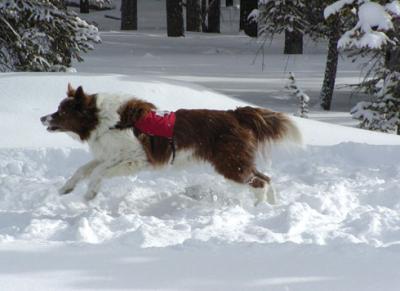
A notable exception is Frank Silva, who has had two live finds with his dog Latte. Latte, a red border collie, has since passed away, but the stories of her successes are still talked about in SAR circles, and beyond.
In December of 2001, Silva was at home sleeping when he got a call about a missing 25-year old woman in Four Corners. Silva is a nine year veteran with Western Montana Search Dogs in Gallatin County. The phone call came at 5 a.m. and when he got to the scene, he was told a woman had left the Korner Club Bar around 2 a.m., apparently drunk, wearing a mini skirt and high heels, stumbling into the 26 degree night. Before Silva arrived, the Sheriff’s office had tried to locate the missing woman with their own dogs, but to no avail. (Police dogs are often trained for “hot tracking,” following adrenaline or fear scent, and do not do “area searches” using a “scent article.”) Using a pair of socks the boyfriend had retrieved from the woman’s hamper, Latte followed the invisible molecules of odor left on the ground, tracking the woman over cement and through backyards to find her passed out ¼ mile away, leaning on a fence post, on the verge of hypothermia. Then in 2004, Latte was credited with a second live find, this time a possible suicide attempt. In this case, Silva and Latte were able to locate a missing woman in a wooded area near her home, the small pistol in her hand with a single live round still in its chamber.
Compared to a human’s nose, a dog’s nose contains 25 times the number of turbinate cells, scent receptor cells located deep in the snout. A full one-eighth of a dog’s brain is devoted to decoding the cornucopia of odors these cells pull out of the air. Not all noses, of course, are created equal, and in Montana with its vast temperature changes and extreme terrain, neither are all breeds equally suited for SAR work.
Kim Gilmore volunteers for the Flathead Valley Search and Rescue. She works Brenner, a four-year-old Belgian shepherd. Big dogs, she explains, can tire easily, while smaller dogs often have difficulties with deadfalls and deep snow.
“In Montana you need a dog that can operate in all four seasons,” Gilmore says. “My first dog was a Doberman and she was a great dog for search and rescue, but Dobermans don’t have a thick coat, so during the winter that was her downfall because she’d chill really easily and I had to keep her working to keep her warmed up. If she stopped, that was it; she’d start chilling and I’d have to put a jacket on her.”
At the Lee Metcalf, when Tirmenstein finally lets Ruby out of her cage an old saying comes into my head, “It’s not the size of the dog in the fight, it’s the size of fight in the dog.” Ruby takes off like a rocket, an erratic laser of black, shooting low over the ground.
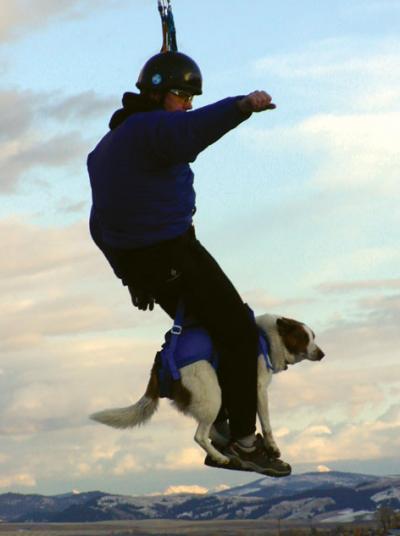
It is exactly this kind of excitement, enthusiasm and drive a handler is looking for in a SAR dog. Most handlers get their dogs as puppies and begin training right away. At the breeder’s or the pound they look for how the dog interacts with the litter, avoiding the most dominant dog because their aggression is too high, as well as the runt, who would lack confidence. “There’s a noise test you can do,” Bonnie Gafney of Western Montana Search and Rescue says, “There’s a dominance test, a retrieving test, and a test to see if they have the hunt drive you want.”
It usually takes a minimum of two years before dog and handler are ready to be certified in even one of the five specialty areas of search and rescue. What makes a good SAR dog is its desire to work, the amount of fight (which in this case translates into play) that is in the dog.
When Mark Polakoff of Absaroka Search Dogs was tracking a lost hunter in the fall of 1987, his dog, Shadow, an all black German shepherd, kept on the man’s trail all night and into the morning, tiring, but never quitting. “The reason she worked like that,” Polakoff says, “Is because I asked her to… she would have walked until she was exhausted for me if I had asked her, but she knew I wouldn’t ask her to do something that would endanger her. She could tell because of our bond, the nonverbal communication going on, that it was of tremendous importance to me.”
The bond between handler and dog is as important as the qualities and drive of the dog itself. The two are a team, and both need to be sharp. “I can’t do it without the dog, the dog can’t do it without me,” Polakoff says. That same night he also learned one of the most important lessons a handler can learn: Trust your dog.
At one point the hunter had turned onto an elk trail, a whole herd trampling a highway through the forest. He followed the trail for a short distance but then turned off, and during the night more elk had come behind, obliterating his tracks. When Shadow came to the trail she set off down it, following the scent of the man. Polakoff thought she was off scent, just following the elk, and tried a number of times to call her back. When he came up to her, Shadow had laid down at the spot where the man’s tracks reappeared from under the second passing of the elk. The next morning, Shadow located the man – scared, bewildered – but okay. It was another rare live find.
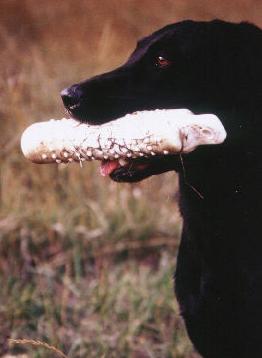
It all goes back to trusting the dog and being able to read it, Polakoff says. “It’s like being a good parent.” Dogs want to please, Polakoff tells me, “That’s part of the bond.” Domesticated dogs also maintain the same hunting drives that wild canines use to survive. “We just take those same drives and channel them to hunt for people.”
There are five basic kinds of searches a dog can become certified in: Avalanche, Tracking and Trailing, Area Searching, Cadaver, and Water. All of them employ a similar but nuanced set of skills. For the dogs, however, it’s always a game. There’s no notion that a search is an emergency situation. All their training has been focused on the enjoyment of the hunt and the “reward” of a toy to chew on, be it a Frisbee, a ball, or a piece of rope. Earlier in the afternoon Tirmenstein had told me to “get lost” and I’d set a zig-zagging track through the forest for Ruby to follow. When Ruby caught up to me, she raced back to Tirmenstein and started barking, exactly what’s she’s supposed to do. Then she led Tirmenstein right to me. What I noted was that all Ruby wanted to do from that point on was play with her rubber ball. I could have been dying of hypothermia, asphyxiation or loneliness, but Ruby could care less, and in fact continued to ignore me for the rest of the day. I’m used to dogs wanting endless attention from friends, family, strangers, or anyone they can contrive into throwing them a ball or scratching their belly. But Ruby is a SAR dog; she was fixated on Tirmenstein.
It may sounds silly, but I felt a little hurt. “Don’t feel bad,” Tirmenstein tried to console me as we walked back to the truck. “It’s not her job. She has very little ‘victim compassion.’”
My feelings aside, the most difficult and yet strangely rewarding part of the job for handlers is often bringing closure to the family of a missing person, who may have been left waiting to hear news of their loved ones for days, weeks, or even years. All the handlers I spoke with told me about touching letters they’d received thanking them for all the hard work, time and effort that goes into a search. SAR units are all volunteer non-profit organizations (or sometimes simply individuals) and receive no remuneration for the frozen nights spent in the rain, the training sessions, the long drives, the income from lost work.
Tirmenstein, who can be called out up to four times a week, has an entire binder full of yellowing pages and cramped tear-stained writing. She shows it to me when we’re in Missoula. I expect it to be heavy with grief. Instead I find it buoyant with words of heartfelt thanks, made all the more throat-catching in the face of the losses they relate. What price, the letters seem to ask, do you place on closure, on locating a corpse for a grieving mother so she can bury her son? Tirmenstein, Silva, Polakoff, Mefford, Gafney and Gilmore, and all the other canine SAR teams around the state, ask for none.
~ Charles Finn is a freelance writer and woodworker, building one-room cabins. His writings have appeared in Big Sky Journal, Montana Quarterly, Montana Magazine and High Country News, among others. He lives in Stevensville with his wife Joyce Mphande-Finn and his cat 42.






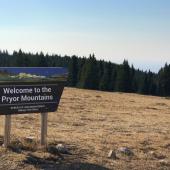
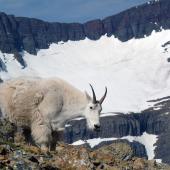




Leave a Comment Here